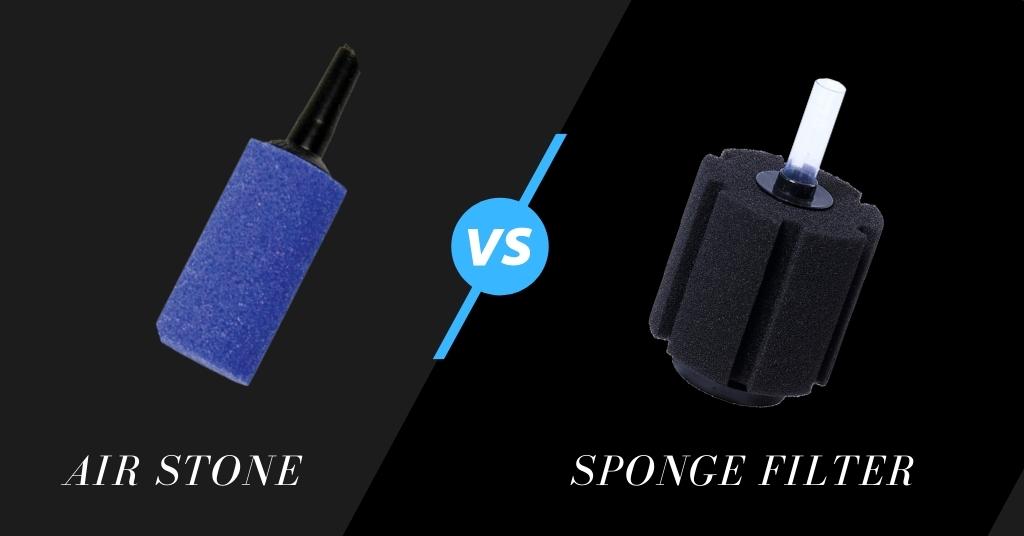Last Updated on February 24, 2022 by cmoarz
Sponge filter vs air stone, What’s the difference, and should you have both? Does one replace the other? These are questions that come up often when discussing the use of air stones in aquariums.
Here we hope to give you a better understanding of the differences between these two pieces of equipment and when, or if, you might want to use them both in your aquarium setup.

Airstone vs Sponge Filter
Table of Contents
The main difference between a sponge filter and an air stone is one filters while also oxygenating the water, while the other only oxygenates the water. Both are powered by an air pump. However, You can have the best of both worlds by placing an airstone inside the sponge filter.
Sponge filters do the same thing air stones do, They bring oxygen into the water column while simultaneously sucking up floating debris.
Unfortunately, most sponge filters come with only a hose attachment which only creates large bubbles.
These larger bubbles are very noisy and less effective.
An airstone on the other hand breaks these bubbles apart into thousands of tiny bubbles, which are much more effective in oxygenating the water as well as much quieter in nature.

The best practice is to use both, a sponge filter with an air stone placed inside
You can get the best of both worlds by placing an airstone inside the sponge filter. Since all the connection air hoses are standardized there are usually no issues with compatibility.
However, many sponge filters come with a longer tube directly in the middle of the sponge filter as well as some other protruding plastic bits.
These need to be removed with a pair of scissors or razor blades before the airstone can be placed inside.
This is easily done and takes only a few moments.

The sponge filter is still effective without an airstone inside it
If you don’t mind the louder sound of larger bubbles then the sponge filter can still work effectively without an airstone.
It will still suck up debris and oxygenate the water, just not as well as when using an air stone.
However, the larger bubbles do create more surface agitation which might be wanted depending on your set-up.
At the end of the day, It comes down to the power of the air pump you are using.
The more airflow you have, the better in both cases.
About
Owner of AquariumGravel.com and also owner of actual Aquarium Gravel believe it or not! ;). Setting up beautiful aquarium sceneries and habitats since I was very young. Enjoy!
- Web |
- More Posts(290)

